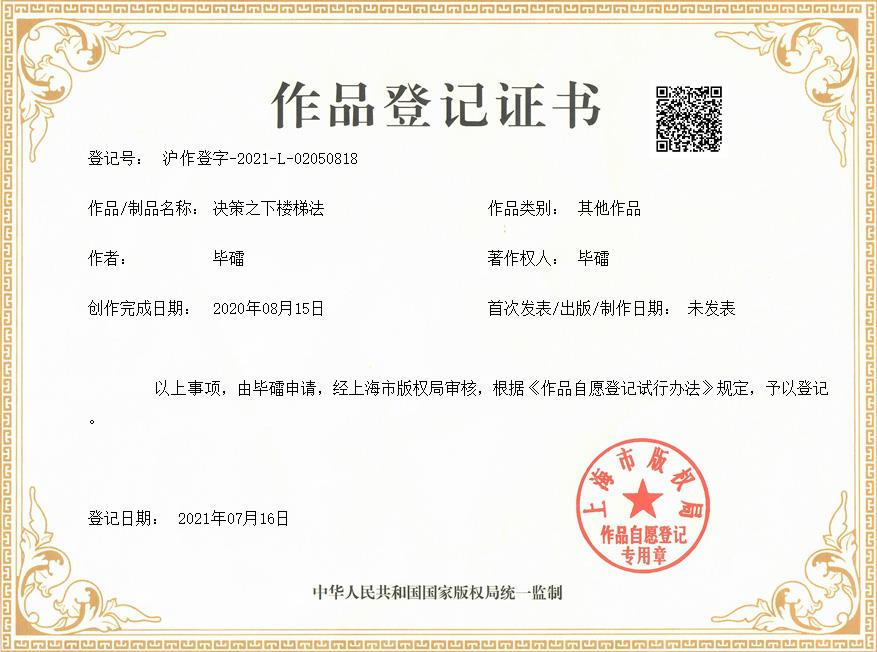我們爲(wéi / wèi)什麽要(yào / yāo)做決策?一(yī / yì /yí)定是(shì)爲(wéi / wèi)了(le/liǎo)要(yào / yāo)落地(dì / de)!決策中最大(dà)的(de)困擾是(shì)什麽?是(shì)每個(gè)人(rén)都覺得自己是(shì)對的(de),卻總是(shì)無法讓對方同意自己的(de)觀點。下樓梯法爲(wéi / wèi)我們提供了(le/liǎo)一(yī / yì /yí)個(gè)統一(yī / yì /yí)觀點,逐步落地(dì / de)的(de)決策思路和(hé / huò)工具。
The one and only goal to make decisions is to put our plans into action. The most significant challenge in decision-making is that everyone feels opinionated and correct, yet they struggle to convince others to agree with their viewpoints. The Downstairs Method offers a unified approach, guiding us step-by-step towards practical decision-making.
走完五個(gè)台階,決策進入真正的(de)落地(dì / de)階段 —— 計劃的(de)制定。首先是(shì)要(yào / yāo)達成目的(de)共識,也(yě)就(jiù)是(shì)爲(wéi / wèi)什麽要(yào / yāo)進行決策,這(zhè)是(shì)一(yī / yì /yí)個(gè)看似很簡單,但卻在(zài)實踐中成爲(wéi / wèi)決策難産之(zhī)根本的(de)問題。其次是(shì)要(yào / yāo)共享信息,共享和(hé / huò)分享有着本質的(de)區别,決策需要(yào / yāo)的(de)是(shì)客觀的(de)、充分的(de)共享,而(ér)不(bù)是(shì)經過加工和(hé / huò)選擇後的(de)分享。再次是(shì)要(yào / yāo)做到(dào)換位思考,這(zhè)也(yě)不(bù)是(shì)像說(shuō)起來(lái)那麽容易的(de)事,大(dà)多數人(rén)的(de)換位思考不(bù)是(shì)自己換椅子(zǐ),而(ér)是(shì)搬着椅子(zǐ)換個(gè)地(dì / de)方而(ér)已。第四是(shì)要(yào / yāo)同向思維與交流。任何一(yī / yì /yí)種決策都有兩面性,隻考慮一(yī / yì /yí)面是(shì)不(bù)合适的(de),而(ér)更不(bù)合适的(de)是(shì)不(bù)同的(de)人(rén)在(zài)同一(yī / yì /yí)時(shí)間各自考慮不(bù)同的(de)方向,這(zhè)是(shì)争端的(de)起點,更是(shì)決策難産的(de)表現形式。最後是(shì)要(yào / yāo)進行推進動作,這(zhè)時(shí)需要(yào / yāo)慶祝,也(yě)需要(yào / yāo)承諾,還需要(yào / yāo)進行行動計劃的(de)制定。說(shuō)過就(jiù)算做過,是(shì)決策最終流于(yú)形式的(de)原因。
To reach the real implementation phase, there are five steps to take.
First, we must achieve a consensus on the purpose, understanding why the decision needs to be made. This seemingly simple aspect often becomes the fundamental problem hindering decision-making in practice.
Second, we need to share information effectively. Sharing and merely distributing information are fundamentally different. Decision-making requires objective and comprehensive information sharing, rather than filtered or selective sharing.
Third, we must engage in empathy, considering the situation from the other person's perspective. This is not as easy as it sounds, as many tend to shift positions superficially instead of genuinely empathizing.
Fourth, we need to align our thinking and communication. Every decision has its duality, meaning that focusing solely on one side of the story is inappropriate. Even more detrimental is when different people consider opposing aspects simultaneously, leading to conflicts and decision-making difficulties.
Lastly, we must take action and proceed with the decision. At this stage, celebration, commitment, and developing an action plan are essential. Words must be put into actions to ensure the decision doesn't remain a mere formality.
